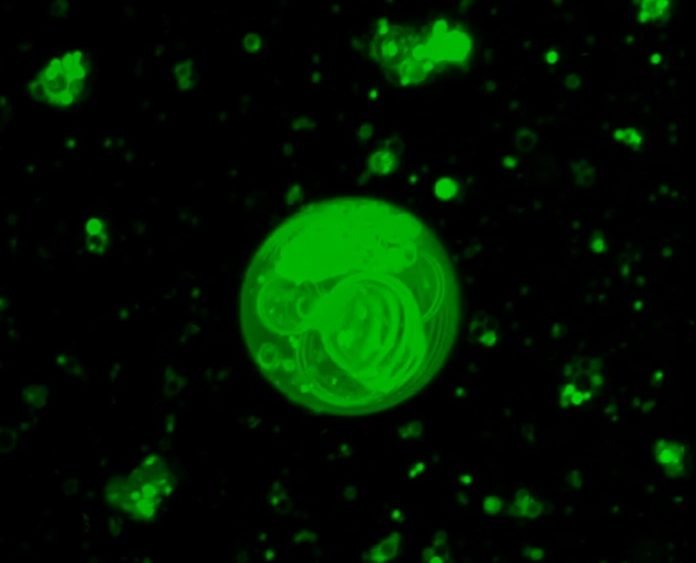
Imagine our planet Earth about 4 billion years ago, a young world just setting the stage for life.
Scientists have long pondered how life began, tracing back to the very first cells, or “protocells,” that set the evolutionary ball rolling.
These tiny bubbles of fat were the ancestors of all living cells we see today. But a big question has stumped researchers: How did these primitive protocells come into being and evolve into the diverse life forms we know now?
Researchers at Scripps Research have made an exciting discovery that sheds light on this ancient puzzle.
Their study, detailed in the journal Chem, explores a key chemical process that might have kick-started the journey from simple protocells to complex living cells.
This process, known as phosphorylation, involves adding phosphate groups to molecules, making them more complex.
The scientists believe this could have happened much earlier than we thought, paving the way for the first protocells to form and evolve into the building blocks of life.
Ramanarayanan Krishnamurthy, a leading chemist at Scripps Research, and his team have been on a quest to understand the chemistry of early Earth. Their goal?
To find out how simple chemical ingredients could have combined to form the first spark of life. “We all wonder where we came from,” Krishnamurthy says. “Our findings offer a plausible explanation for how life’s building blocks could have formed on early Earth.”
The team’s research points to a fascinating scenario. They suggest that protocells could have started as simple spheres made of fats. But for life to evolve, these protocells needed to become more complex, able to host chemical reactions and divide, leading to a diversity of life forms.
The key to this complexity? Phosphates. These molecules are essential for nearly every chemical reaction in our bodies today, and the scientists suspected they played a crucial role in early life forms too.
To test their theory, Krishnamurthy and his colleagues, including soft matter biophysicist Ashok Deniz, experimented with chemicals that might have existed on prebiotic Earth.
They mixed fatty acids and glycerol—a substance likely present on early Earth—and observed how these mixtures reacted to form vesicles, or protocell-like structures. By adding different chemicals, varying the pH, and adjusting the temperature, they mimicked the harsh conditions of early Earth.
Their experiments revealed something remarkable: the vesicles transitioned from a simple fatty acid structure to a more stable, double-chained phospholipid structure.
This transformation, driven by phosphorylation, could have been the critical step allowing protocells to evolve into more complex forms capable of sustaining life.
“This discovery opens up new avenues for understanding how life might have evolved on Earth,” says Deniz. The researchers are excited about the implications of their work, suggesting that the early chemistry of our planet could have been conducive to the formation of life as we know it.
As they plan further studies to explore the behavior of these protocells, the team is closer to unraveling the mystery of life’s origins. Their work not only helps us understand where we came from but also provides insights into the fundamental processes that underpin all life on Earth.



